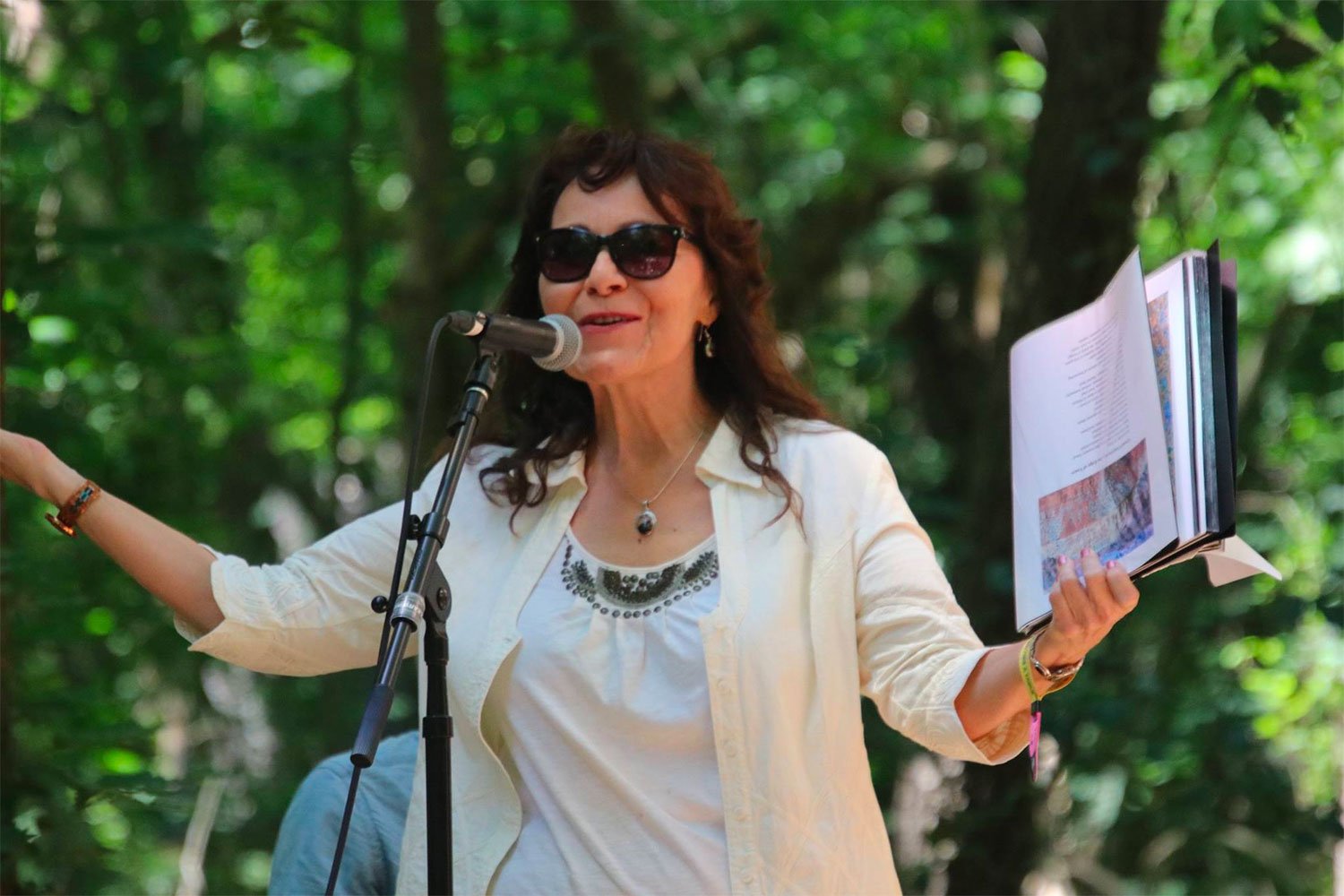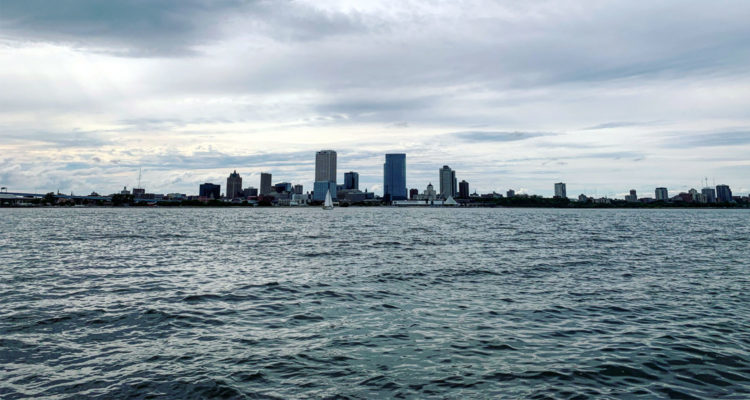As summer in Wisconsin winds down, we savor a time when water occurs naturally in a liquid state. It’s our beautiful reminder that those other nine months of snow and ice are merely an aberration.
The days of gardening, swimming, fishing, car washing, kayaking, Super Soaking, and other traditions are precious. As is the resource that is key to such activities.
Recent months have been notably rough on the global water front. Historic droughts are drying things up to the point that WWII Nazi vessels and dinosaur tracks are just, you know, right over there now. On the other extreme end of the climate crisis, floods in Pakistan have displaced 33 million people. Closer to home, the largest city in Mississippi still doesn’t have reliably clean drinking water. Even America’s sweetheart Kim Kardashian is now a pariah—et tu, D-Wade?—because she soaked up more than her allotted share of California’s extremely limited supply. (The state is thinking outside the box with Project Nexus, which is as cool as it sounds.)
But if anyone can chillax upon realizing they forgot to turn off the sprinkler before heading to the Dells over Labor Day weekend, it’s those of us east of the subcontinental divide that runs along Sunnyslope Drive in New Berlin…right? After all, we’re situated on the edge of the Great Lakes, which comprise 20% of all freshwater in the known universe.

The 414 is, in fact, the place for H₂O. Our Native predecessors and/or ancestors certainly appreciated the unique local waterways. They referred to this neck of the woods in “Milwaukee”-ish terms that are generally interpreted as, yes, “the good land,” and also “gathering place by the water.” Tribal councils in our region would meet up at the Milwaukee River, specifically at 5th Street & Wisconsin Avenue, to conduct business. Remember those blue City Edition uniforms the Bucks wore way back in their NBA Championship 2020-21 season? That’s what that was about!
Water—yep, it’s kind of our thing. No surprise our hometown is home to UW-Milwaukee’s School of Freshwater Science, The Water Council, Reflo, Milwaukee Riverkeeper, and other organizations that highly value our extraordinarily special place in the planet’s ecosystem.
Those groups, however, exist largely to educate about the tenuousness of that ecosystem and what it takes to keep our surroundings non-lethal. The ancients among us recall 1993’s original crypto crash, when a cryptosporidium outbreak became “the largest epidemic of waterborne illness in U.S. history.” It sickened 400,000, hospitalized 4,000 and killed 104.
Now in 2022, we’re eating and drinking more microplastics than ever, the DNR officially lists the Milwaukee Estuary as an Area of Concern, and climate change continues to find new and interesting ways to destroy the Great Lakes. BTW, ICYMI, South Milwaukee residents had to boil their tap water for a while in June.
Um, folks? Let’s maybe do something about this increasingly bothersome situation. No offense to Bob Uecker, but water is clearly our most precious natural resource. As is the case with Bob, each of us is honor-bound to protect it.
Time for some action
While we love to point at corporations as the primary water-use culprits, households could definitely cut back. We can keep letting businesses know it’s important to do better and we can take personal responsibility for water use on the homefront.
There’s no shortage of helpful resources that offer guidance. Here are just a few items near the top of the water sustainability rabbit hole that can help us start to do our part.
• Scale back
The Wisconsin Department of Natural Resources gives us ideas for cutting our personal water usage. Milwaukee Riverkeeper suggests several simple ways to conserve water in the bathroom, kitchen and yard. The City of Milwaukee itself wants to keep your water bills low.
• Keep it clean
Milwaukee Water Commons educates, advocates and engages for healthy water throughout the community. Channel 3000’s News 3 spoke with the UW Center for Limnology about the importance of water quality over quantity. MMSD advises us to, among other things, “only flush the three Ps.”
• Retain the rain
Edible Milwaukee has tips for our gardens, and for getting the whole family involved. MMSD wants to help us roll out the rain barrel. Groundwork Milwaukee’s Urban Waters program collaborates with city departments and residents to implement conservation systems like bioswales and dedicated rain harvesting structures.
Life is linked to water
Kimberly Blaeser, PhD, was Wisconsin’s Poet Laureate in 2015-16. She’s founding director of In-Na-Po–Indigenous Nations Poets–and is Emeritus Professor at UW-Milwaukee’s Department of English and Program in American Indian Studies. She has lived near wetlands since childhood, and writes extensively about her relationship with water.

Kim Blaeser at Eaux Claires, 2018
Milwaukee Record asked Kim about that relationship—she kindly and thoughtfully responded from the Storyknife Writers Retreat, overlooking Cook Inlet in Homer, Alaska, referring us in part to an essay she wrote that touched on our topic, “A Cosmology of Nibi: Picto-poetics and palimpsest in Anishinaabeg watery geographies.” You can read that full piece in Geopolitics in Practice, from Routledge (1st Edition, 2019).
Milwaukee Record: You divide your time between the wetlands of Lyons Township and a cabin near Minnesota’s Boundary Waters. How is proximity to water important to you personally?
Kim Blaeser: On White Earth Reservation in the Northern Minnesota of my childhood, I grew up in rich water country. Water didn’t come from a faucet. We collected rain, pumped our drinking water from the belly of the earth, or hauled it from springs in cream cans in the back of my uncle’s pickup. Our daily household water source was a pail and a dipper. […]
Because water came through labor, we didn’t waste it. Because our life was linked to water, we knew it as a relative. […]
The impression endures. Even now it affects how I see, what I notice, and how I assess values. Years swing between freeze-up and break-up…The minutiae of my days and nights awaken a particular kind of longing in my spirit, a territorial hunger or tenderness in my fingertips.
MR: Many of us promote water conservation because we view it as a natural “resource,” something we use to sustain or enhance our lives. Is there another way to approach our human relationship with water? Should we protect it for other reasons than we simply need it to live?
KB: Those native to the vast water country learn to honor nibi with songs, prayers, and offerings, and to live gratefully aware of our dependence. Together we carry the burden of continuance. […]
In my understanding…ecoliteracy involves not only an acquaintance with natural creatures, places, and their stories, but also a certain kind of embedded land knowledge that sometimes yields visual and verbal language and includes a deep awareness of relatedness that evolves into a moral compass of reciprocity. Relationship results in coded knowledge and carries responsibility.
MR: In an interview with Verse Wisconsin, you discussed how ecopoetry “arises from an awareness of the entwined nature of all elements in our world.” Additionally, you recently spoke with the National Endowment for the Arts about In-Na-Po, saying that the act of Indigenous writers allowing their language to come through is “an act of resistance.” How powerful can the written word be in water’s sustainability and ecological survival?
KB: My question in reply to your question: How can we sing the planet in all its intimate beauty—in the midst of its destruction? Is writing place, water, relatedness, responsibility—writing our ancient belonging, now inevitably elegy? How shall we spend ourselves for repair?
Feeling related and responsible breeds more honorable behavior. Bringing readers/listeners to an intimate experience of the alive beauty of water may awaken their own dedication for care of this prime element. Understanding reciprocity comes only when we enter into relationship.
Literary works can invite such engagement. Each being lives their own enmeshed reality. As artists we can open our known to those willing to make its acquaintance. Poetry can seed a conversation with the world, art can gesture beyond itself to the ineffable. Those who accept the entrance may continue on the journey, may accept a new role of water relative, of water protector. Thus, by invitation to experience experience, writing may feed eco-understanding.
Bottom line
For those more swayed by numbers, leaving the faucet running while brushing your teeth or washing dishes doesn’t send it directly back into Lake Michigan. Turns out it takes a lot of money and effort to treat every drop of that long shower before it ends up back in your tap to rinse produce.
Sadly, the longer-term outlook for freshwater-adjacent communities might include economic benefits for a proposed Great Lakes Autonomous Zone that might gain traction. Climate migration to our region is already sort of for real happening.
Breaking: Capitol Hill Autonomous Zone
Baking: Seattle Autonomous Zone
Awaking: Great Lakes Autonomous Zone pic.twitter.com/Tw6CrptHOd
— Populism Updates (@PopulismUpdates) June 12, 2020
For now, the city will host three large conferences on water this fall to coincide with the 50th anniversary of the landmark Clean Water Act. According to the press release from The Water Council, “The Milwaukee Region’s water industry is a $10.5 billion market, supporting 20,000 jobs and accounting for 4% of the total world water business.”
Milwaukee, however, was expelled by the United Nations as a Global Compact City in 2021, delisted for “failure to report progress” on our commitment as “an international hub of water research and technology.” While that is, in Milwaukee Record‘s expert opinion, “not ideal,” we’ve got just about all the infrastructure in place one could ask for to live up to our potential. And as residents, we can do our part to live up to what originally made us such an important gathering place on the water.
Exclusive articles, podcasts, and more. Support Milwaukee Record on Patreon.
RELATED ARTICLES

